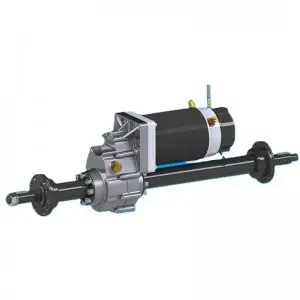In the world of car modification, enthusiasts are constantly looking to push the boundaries of what’s possible. While front-wheel drive (FWD) vehicles dominate the market, some enthusiasts wonder if it’s possible to convert a FWD transaxle to rear-wheel drive (RWD). In this blog, we’ll explore the feasibility and challenges of this transition.
Learn about front-wheel drive and rear-wheel drive transaxles
To understand the feasibility of converting a front-wheel drive axle to a rear-wheel drive axle, one must understand the fundamental differences between the two systems. FWD vehicles use a transaxle, which combines the functions of a transmission, driveshaft, and differential to send power to the front wheels. Rear-wheel drive vehicles, on the other hand, have separate transmission, driveshaft, and differential components with power transferred to the rear wheels.
feasibility
Converting a front-wheel drive axle to a rear-wheel drive axle is technically possible, but it’s a difficult task that requires a thorough understanding of automotive engineering and modification. It involves changing the vehicle’s entire drivetrain, which can be complex and time-consuming.
challenge
1. Reverse engine rotation: One of the major challenges in converting a front-wheel drive axle to a rear-wheel drive axle is reversing engine rotation. FWD engines typically rotate clockwise, while RWD engines rotate counterclockwise. Therefore, engine rotation needs to be reversed to ensure compatibility with RWD systems.
2. Driveshaft and differential modifications: The front-wheel drive transaxle lacks the independent driveshaft and differential required for rear-wheel drive. Therefore, extensive modifications are required to integrate these components into the vehicle. The driveshaft needs to be precisely aligned to ensure smooth transmission of power to the rear wheels.
3. Suspension and Chassis Modifications: Converting front-wheel drive to rear-wheel drive also requires suspension and chassis modifications. Rear-wheel drive vehicles have different weight distribution and handling characteristics compared to front-wheel drive vehicles. Therefore, it may be necessary to adjust the suspension settings and stiffen the chassis to accommodate the changing dynamics.
4. Electronics and Control Systems: To ensure optimal performance, modifications to electronic control systems such as ABS, stability control, and traction control may be required. These systems are designed for front-wheel drive vehicles and require reprogramming to maintain compatibility with rear-wheel drive configurations.
Expertise and resources
Given the complexity involved, converting a front-wheel drive axle to a rear-wheel drive axle requires significant expertise, resources and dedicated workspace. Extensive automotive engineering, manufacturing and custom machining knowledge is required to successfully execute the conversion. Additionally, access to a variety of tools and machinery, including welding equipment, is critical.
Converting a front-wheel drive axle to a rear-wheel drive axle is indeed possible, but it’s not a project for the faint of heart. It requires a thorough understanding of automotive engineering, manufacturing skills, and access to the necessary resources. It is critical to consult with an expert in the field before making such modifications to ensure safety and optimal performance. Ultimately, while the idea of converting a front-wheel drive axle to a rear-wheel drive axle may sound appealing, feasibility must be weighed against practicality and potential challenges before such a project is undertaken.
Post time: Sep-20-2023


